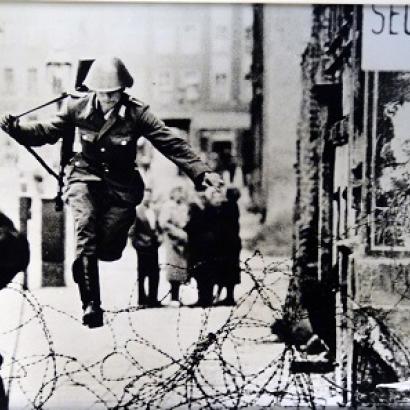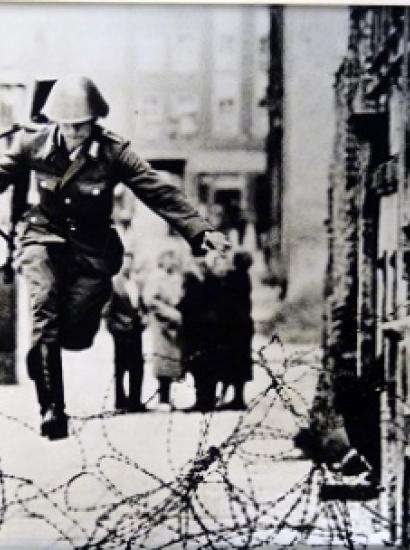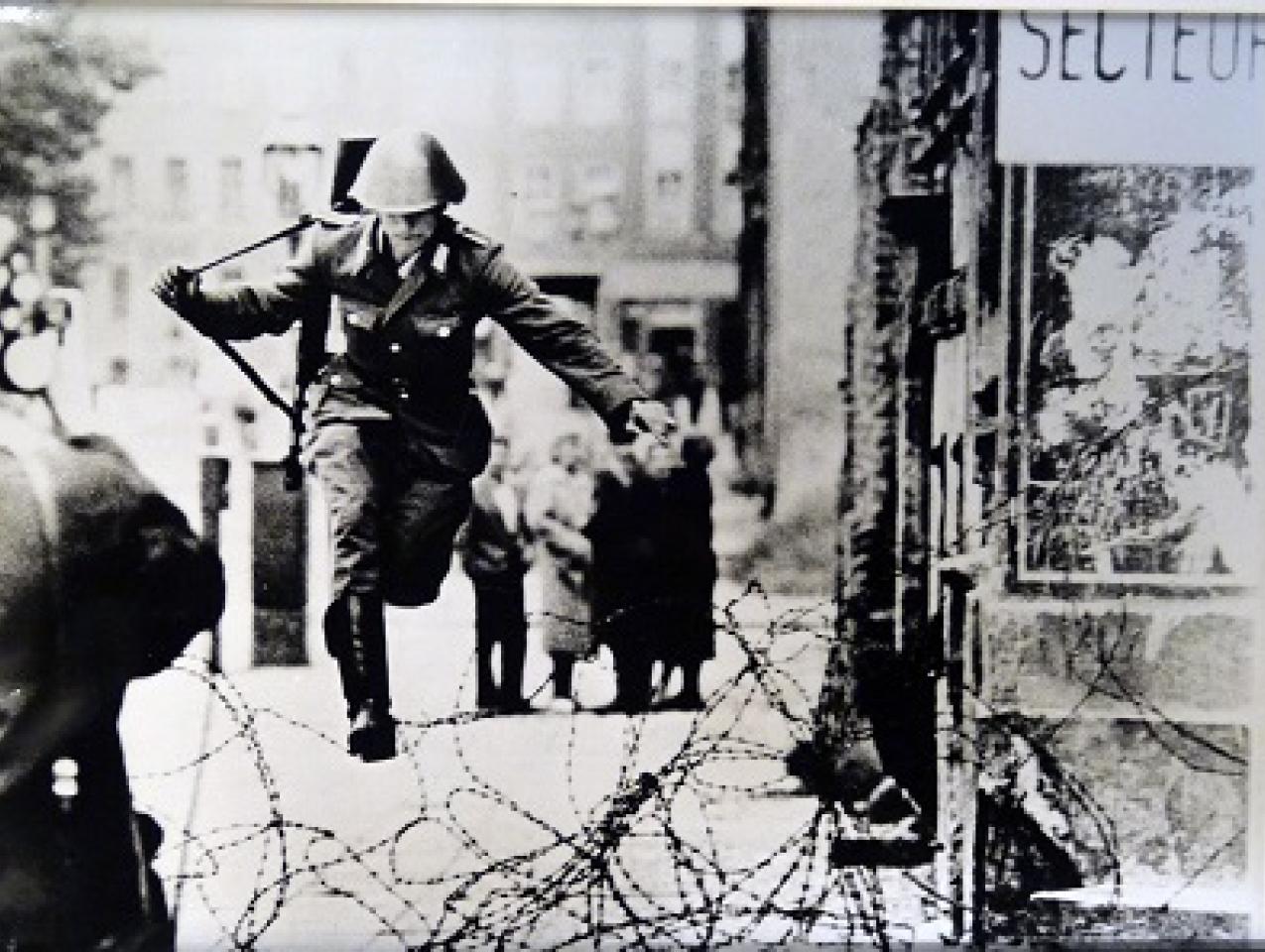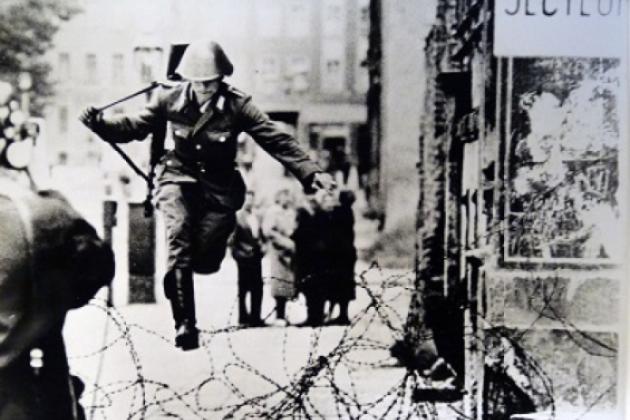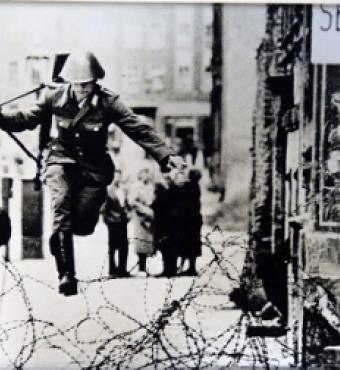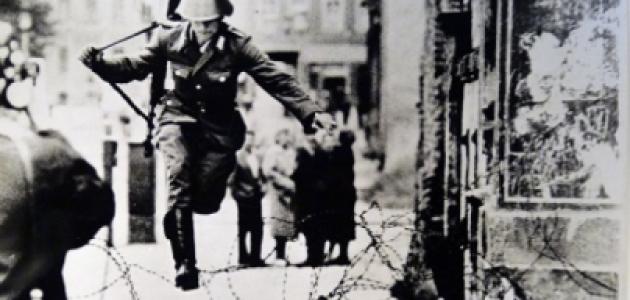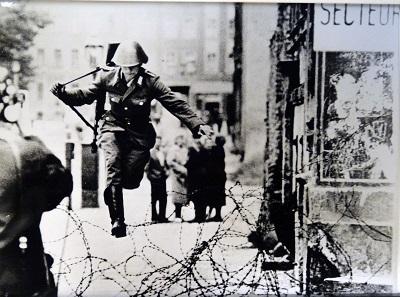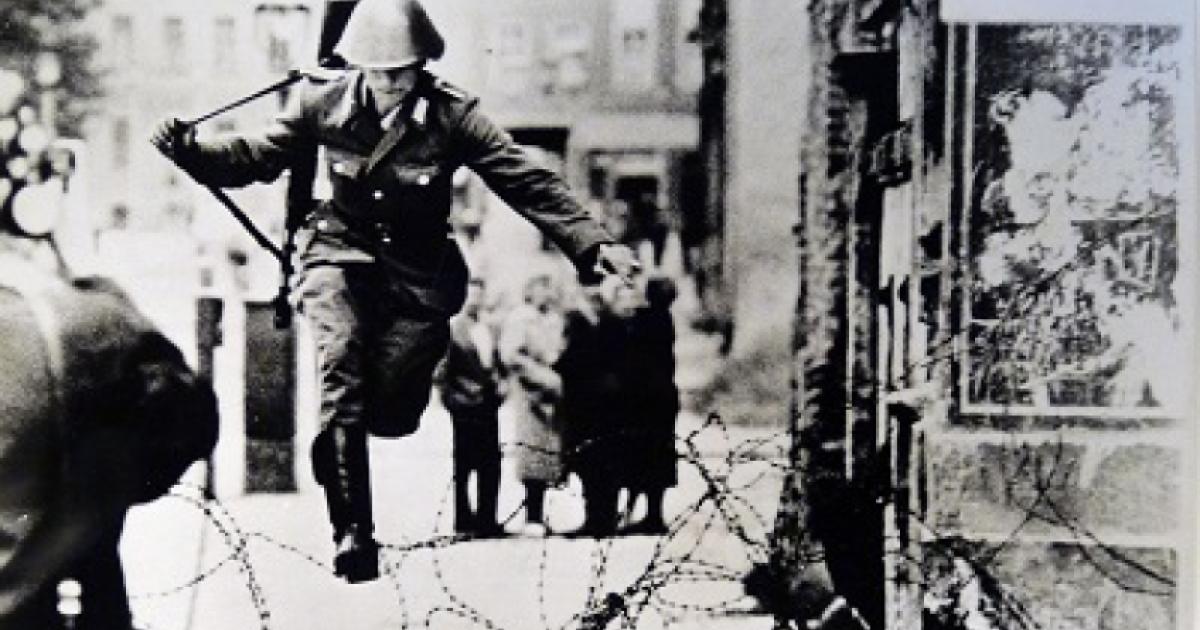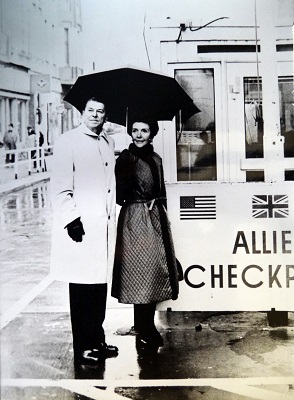
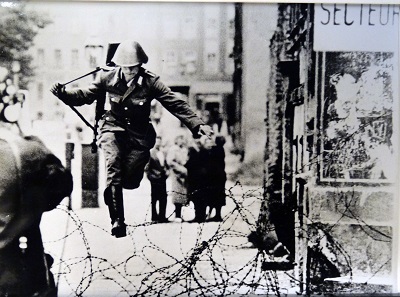
Hoover’s European collections have added a valuable item to its holdings, an album of thirty-five mounted photographs documenting the history of Checkpoint Charlie, the best-known Berlin Wall crossing point between East Berlin and West Berlin during the Cold War. Covering the years 1946 to 1989, the album was printed in 1990 from contemporary and earlier negatives, showing the wall, important moments in the wall’s history, noted visits to the wall by Willy Brant, JFK, Ronald Reagan, and others and other images of the Cold War icon and its context.
A selection of these photographs was on display in Hoover’s recent exhibition, Revolutions in Eastern Europe: the Rise of Democracy, 1989-1990.
At the end of World War II, Berlin was occupied by the United States, Great Britain, the Soviet Union, and France and divided into four administrative zones. Although the Soviet Union was officially allied with the western powers during the war, tensions quickly escalated due the dramatically different political and economic systems represented by both sides: a planned economy and single-party rule on the Soviet side and democracy and free markets in the West.
East Germans and other individuals from Eastern Europe increasingly sought refuge in the West from the oppressive political environment and poor economic conditions in the East. By 1961, 3.5 million East Germans had emigrated, representing about 20 percent of the country’s population. Since many of these refugees were highly skilled, including engineers, scientists, scholars, and educators, East Germany’s economy suffered a “brain drain”; it thus decided to prevent emigration by constructing the Berlin Wall. The wall began as a barbed wire fence on August 13, 1961, but soon evolved into a massive concrete barrier that included strategically placed guard towers and a no-man’s land where individuals would be shot on sight if caught crossing over. The wall became an enduring symbol of division between the western democracies of Europe, including the United States, and the Soviet Union and its satellite countries.
The most famous crossing point across the wall was “Checkpoint C,” nicknamed Checkpoint Charlie.” This was the site of a tense standoff between US and Soviet tanks in 1961, an area where successful and unsuccessful escapes from the East were attempted, and a place visited by Western leaders, including Presidents John. F. Kennedy and Ronald Reagan.
It must have been a surreal experience for Germans on the night of November 9, 1989, when guards at the Berlin Wall were told to stand down and thousands of German citizens streamed across the once impregnable barrier.
For additional information, contact Maciej Siekierski at siekierski@stanford.edu.




